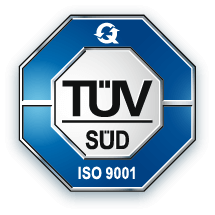Multimedia communication
In 1926 – silent movies in cinemas had not yet been superseded by sound film – the German journalist and writer Ludwig Kapeller envisioned the "future of radio broadcasting" like this: "… A push on the button, and rushing sound, with depths and perspectives; and another push: moving image, illustrating sound, a turn on the lever, and England comes on, boxing match in London, with fist blows and groans of pain, with the fighters quick gestures; [...]
And the day after tomorrow maybe: the vivid, colorful, talking radio-film, capturing experience with all senses, and mastering through technology what – to the millions [of people] hungry for experience – reveals itself by pressing the black button."
Translated into today's terms his vision was one of Color Television, Hifi sound, live transmission of overseas sports events, and immersion into Virtual Reality ("all senses"). Almost a century ago a bold vision – nowadays matters of course.
In today’s digital media environment basic traits have shifted and fundamental distinctions of the past have blurred or even disappeared. The technological convergence of different types of media together with the internet facilitate mass communication, interpersonal communication and organizational communication. Depending on perspective and context the internet is a global technical infrastructure, a communication channel, a medium of its own, or a space of experience. Traditional media like TV stations use it as the return channel which is lacking in old media.
The online editions of print media incorporate podcasts, videos, ratings, fora and polling.
As content has become digital, it can be delivered through every digital channel which offers sufficient bandwidth.
From mass audience to individual users
What used to be mass communication – messages from the few via mass media to a largely anonymous mass audience – has been transformed into computerized communication from many to many. The undifferentiated mass audience of the past has turned into countless individual media users, who decide for themselves where, when, and on which device they enjoy media content, whether they interact with a medium, use a return channel, or even react by creating and publishing media content of their own.
The enabling platforms often provide services 'free of charge', which means they are being paid for with the users data and attention. Inadvertently or deliberately – users give away personal data on their whereabouts, interests, family and friends, on their consumer choices, political and cultural preferences, and more. The data gathered is the raw material for information and services which can be sold to marketers, advertisers and campaigners, who target groups and individuals with customized programming and messages.
Multimedia elements
Multimedia content is usually composed of visuals and audio. It is received, viewed and listened to through electronic devices. Depending on the particular purpose of a medium in a certain environment, audio and visuals can be complemented by equipment aiming at other senses, for example through tactile or haptic feedback, e.g. a control stick giving force feedback in a flight simulation, or interactive gloves, which serve as input device that detects hand and finger movements and at the same time create sensations of touch as an output device.
Even the simplest video usually allows the user to pause, rewind and fast-forward. The playback speed can be adapted, subtitles selected in different languages or turned off. A key feature of many multimedia products is interactivity. If a producer adds interactivity to the medium, narrative strands can branch out and leave it up to user decisions, how a story develops and how it ends.
Common visual forms integrated into multimedia are images, graphics, live action video and animations. Text may be integrated in written form or by speech (i.e. voice recording). Audio comprises speech from live and voice-over recordings, original sound, sound effects, and music.
Good acoustic intelligibility of the spoken word is often indispensable. Therefore the recording quality should hold up to a high standard, and in order to achieve a good final result, all components of the final audio can be brought into the optimal relationship with each other by mixing and mastering.
Creating video content
Today, commonly digital cameras, computers and software are used to produce video. Often the camera is actually a smartphone, which can also be equipped with apps for editing and publishing. Thus the smartphone can take over tasks which would otherwise be assigned to a computer. As many smartphones offer high resolution video recording (4k and more) and good audio recording capabilities, teen bedrooms turn into broadcast quality video production facilities.
However, many videos do not contain any photographical recordings at all, but rather animations, recordings from computer screens, or other virtual objects and environments generated by software. In such cases, not even a camera is needed to produce the video – any computer with suitable software does the same.
Individuality and mobility
Some features of contemporary media consumption became apparent decades before the dawn of the digital age. People wanted to tailor their own programs to their individual preferences. They wanted to be able to consume these programs regardless of where they were, and independent of when the programs were scheduled to be broadcast on radio or TV.
Audio technology was the first to cater to this demand. A rather small innovation transformed the market for audio media. Technologically anything but revolutionary, it nevertheless revolutionized how an existing technology could be used, and for about 30 years became a formative phenomenon of everyday life and pop culture.
In 1963, Philips presented a new storage medium at the International Radio Exhibition in Berlin, the compact cassette (CC, or Music Cassette, MC). At the same time the electronics manufacturer launched the first portable cassette recorder onto the market. A magnetic tape running inside a cassette housing served as analog data storage. The tape was similar to that used with tape recorders. But in contrast to tape recorders, the handling of the medium was considerably simplified. The compact cassette was inexpensive and robust; it could be switched between different recording and playback devices more quickly and easily than anything before.
Over the years, the audio quality of the compact cassette improved to Hifi-standard. And in addition to home stereo systems and car radios with cassette player, various portable devices became available for the medium. With radio recorders, music could be recorded directly from radio broadcasts, and double cassette decks made it easy to put together individual mix tapes from original and from user-recorded material – not for the last time challenging a reluctant music industry with a new technology.
In 1979 Sony launched the Walkman, a small and lightweight lifestyle accessory that allowed everyone to carry their own favorite soundtrack in a pocket and listen to it on the move. Until they were replaced by the third generation Apple iPod in 2003, compact cassettes, Walkman and Co. embodied the technologically enabled individuality and mobility which continue to exist today as constituents of the digital age.
Social Circumstances
How technology is used and how it impacts people’s lives not least depends on historical, social and political circumstances. For better or worse, in its 30-year history the audio cassette was not only used for musical entertainment or messages on the answering machine. Long before the advent of CDs, downloads and podcasts, it provided for the dissemination of education and information in the form of audio books, learning media, radio drama and other spoken text formats, some of which proved to be socially relevant, and even politically explosive. In Iran, before the revolution in 1979, the audio cassette was the preferred medium for spreading the oppositions messages.
Applying multimedia –> read part 2 of our editorial


